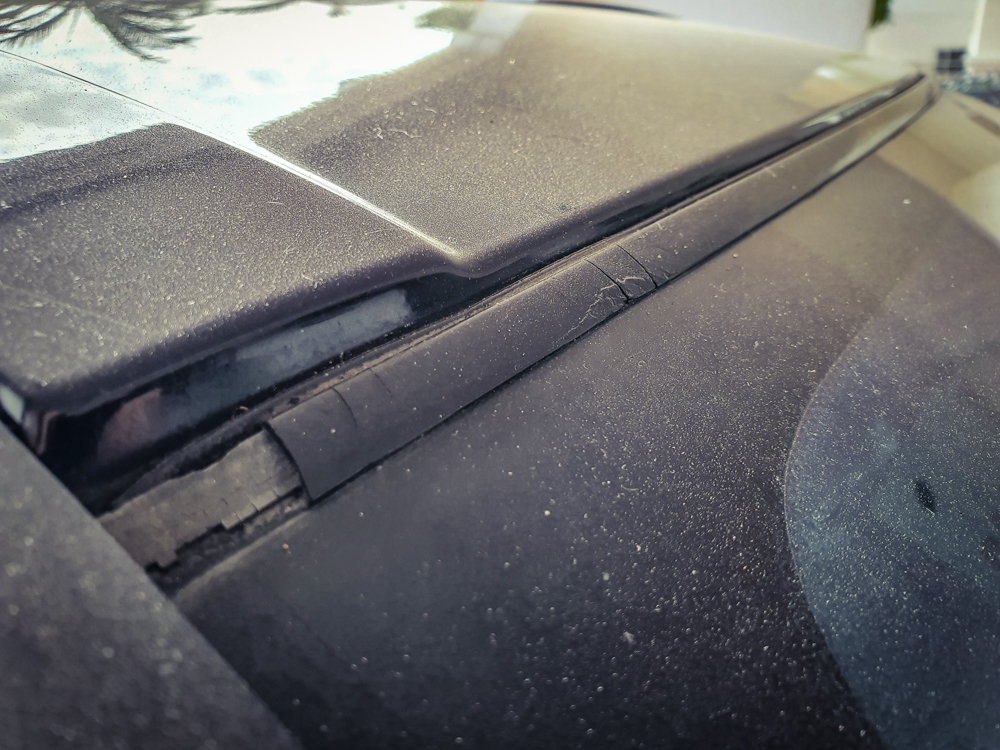
Intense solar heat can damage your car’s rubber, plastic or vinyl bits (such as fixtures, molding and weather strips) over time especially when they’re unprotected. It’s just like overexposing bare skin to UV rays without sunscreen, which leads to premature aging and cancer. Make sure to care for these parts as they serve an important purpose, whether it be for your vehicle’s function or form.
Let’s first identify these parts.
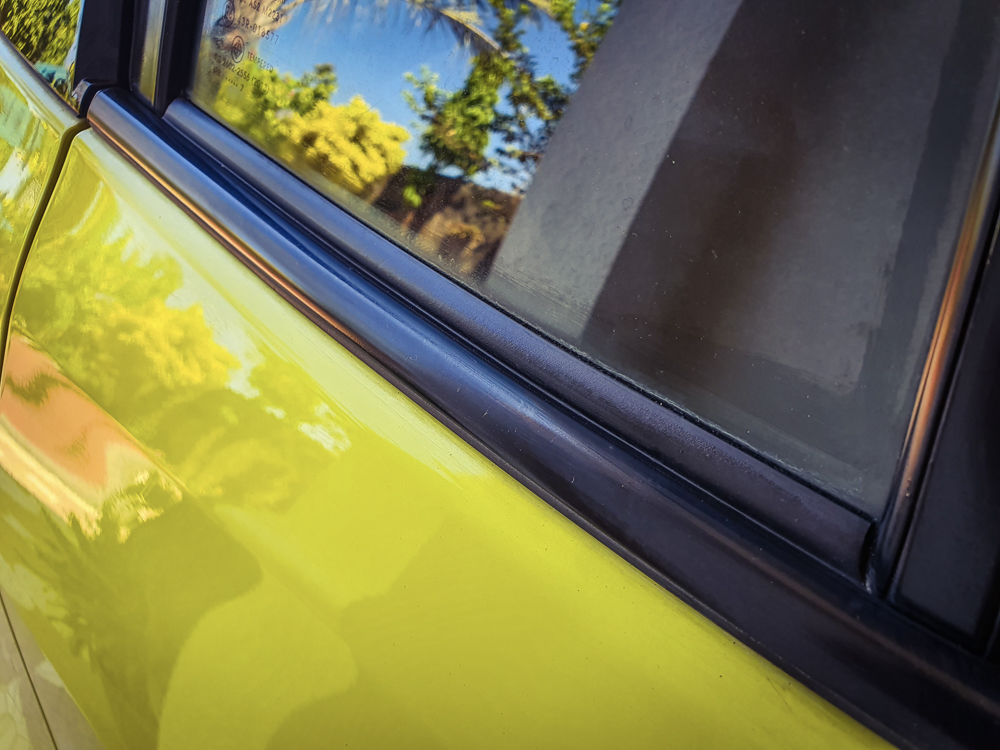
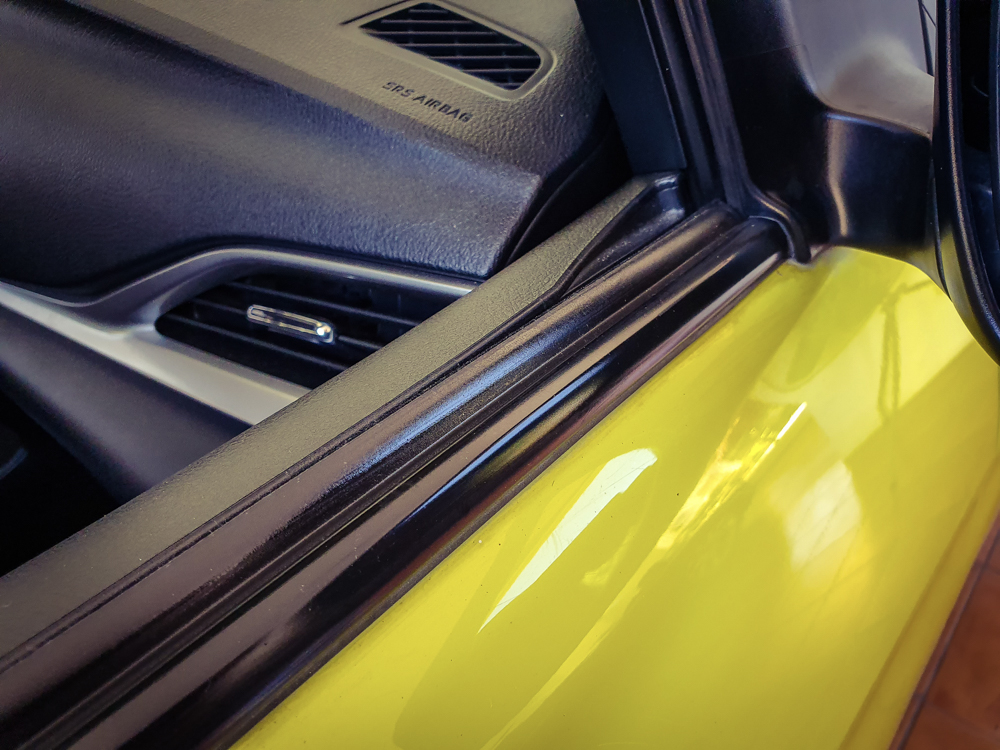
Automotive molding. These are usually made of a plastic polymer known as polyvinyl chloride (PVC). These are commonly found around windscreens, windows, doors and even your mudguards. They ensure proper fitment of glass panels onto a vehicle’s frame and prevent water from entering the cabin or the insides of door panels where opening and closing of windows are concerned.
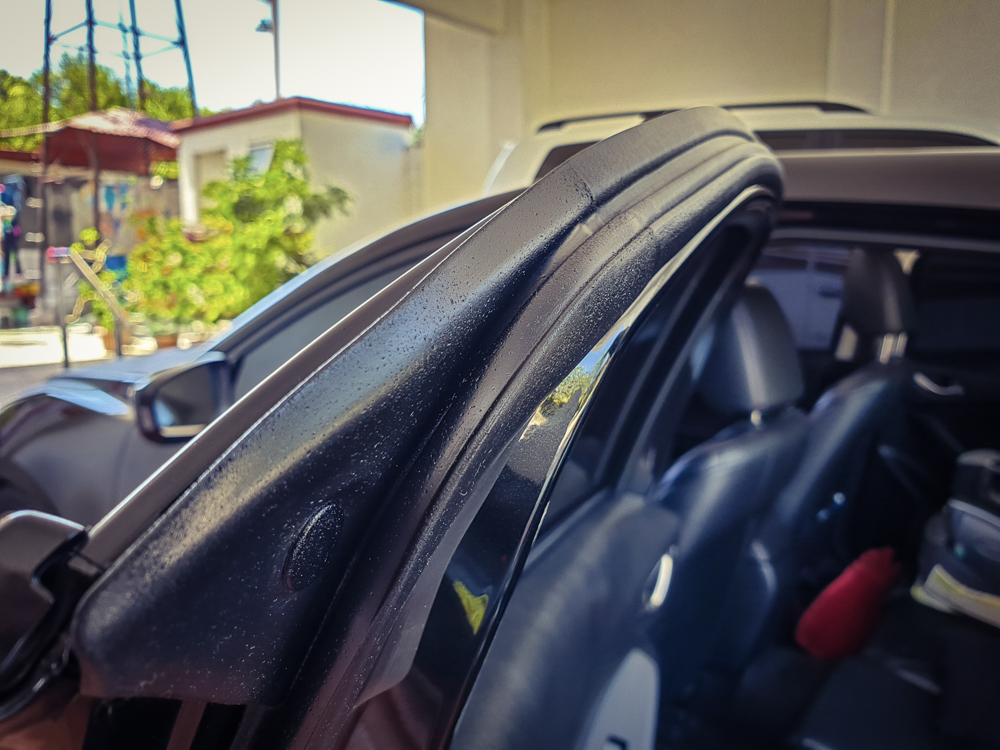
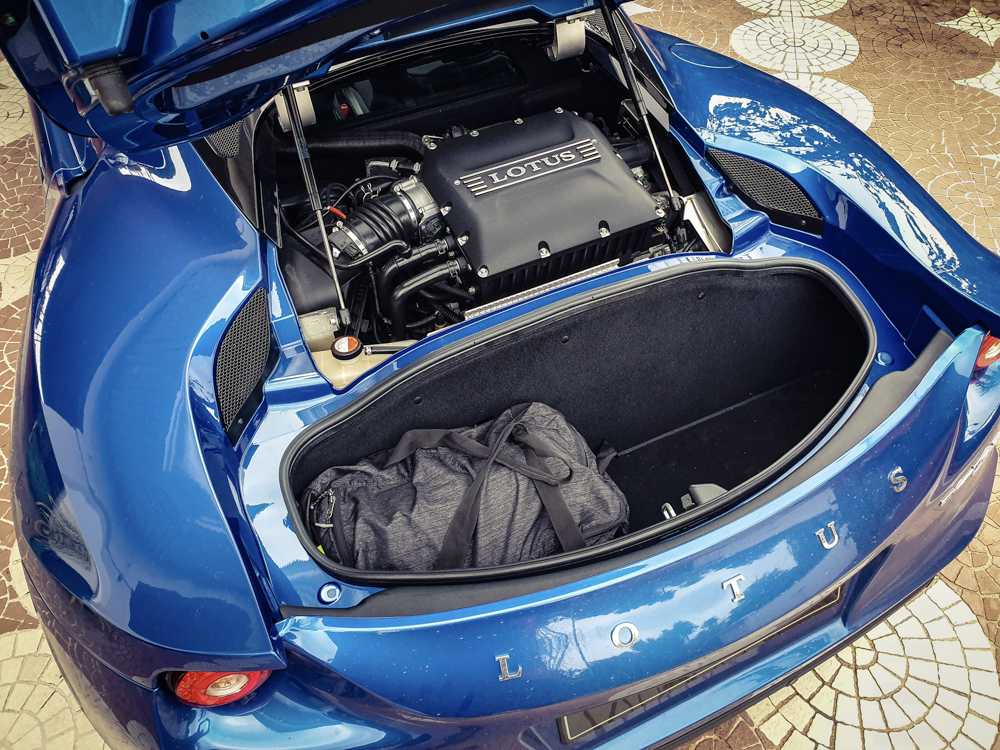
Automotive weather strips. These supple rubberized components are usually found lining the inner portions of the vehicle’s doors, hood, trunk and sunroof. Aside from preventing water from entering a car’s interior, acting as external noise suppressors and preventing metal-to-metal contact between moving components and the vehicle frame, they also help your air-conditioning to operate more efficiently by keeping interior air from escaping and exterior air from entering.
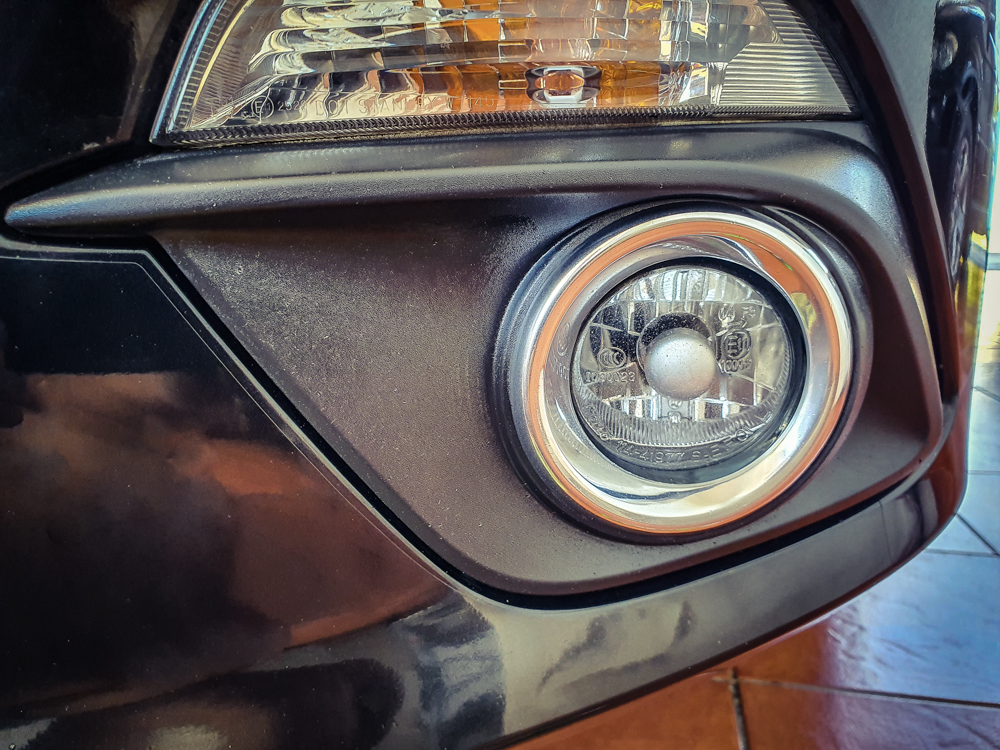
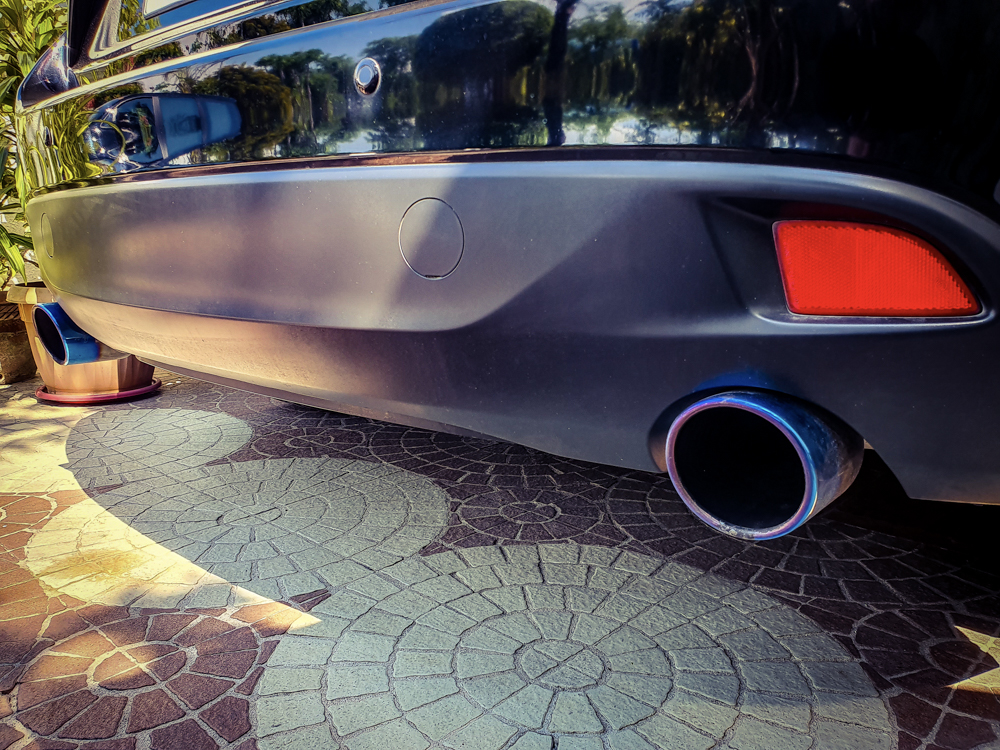
Acrylonitrile butadiene styrene (ABS), polypropylene or polycarbonate plastics. In modern cars, these plastics are commonly used on many areas including bumpers, light lenses/covers, fenders, body garnishing, and interiors. Their lightweight nature, ability to absorb impacts, and durability make them great components for vehicle manufacture.
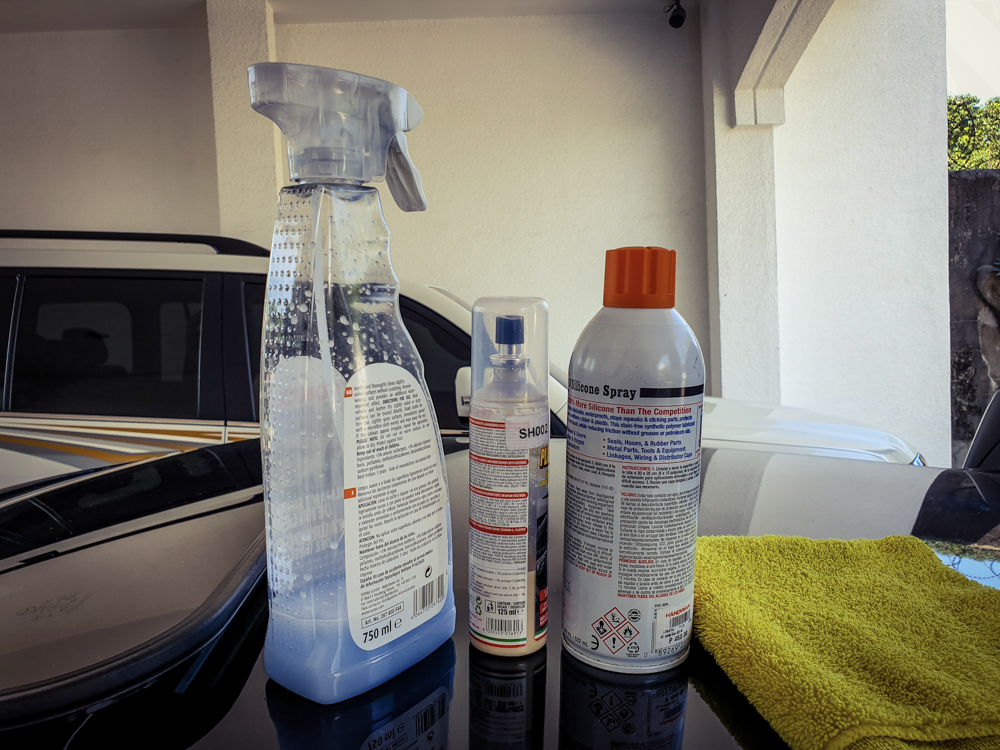
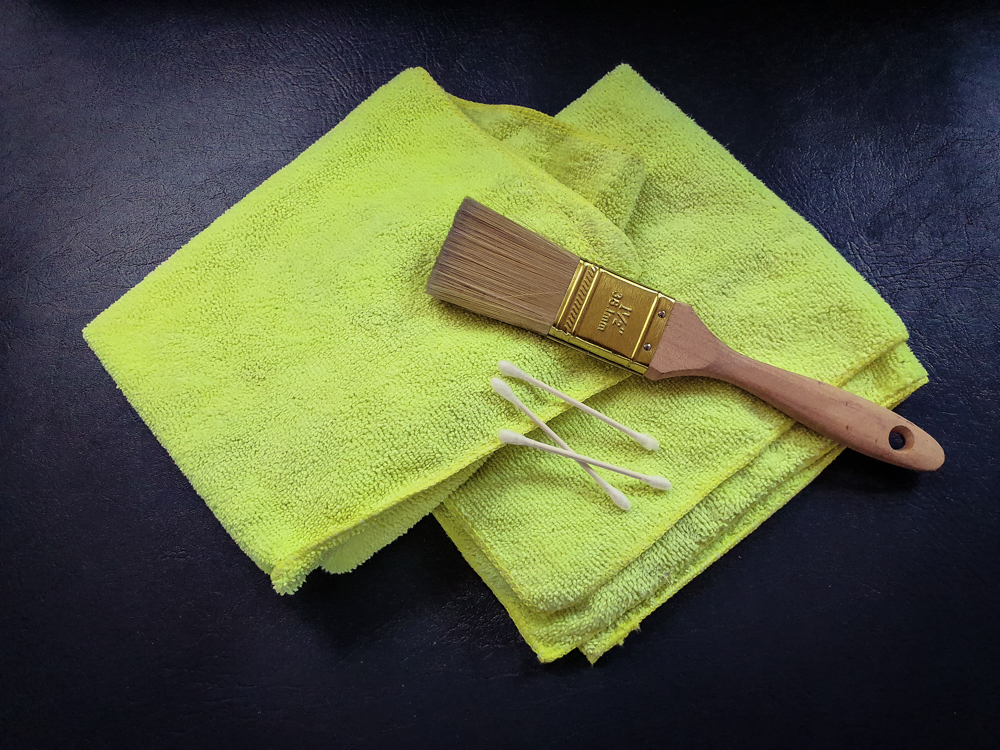
Some of the things you will need to maintain and protect these plastic/rubber parts from heat damage are:
- Protectant
- Silicone spray
- Trim restorer (for faded plastic parts)
- Car detailer spray (for cleaning)
- Soft-bristle paintbrush (for removing dust and debris within creases)
- Soft terry towels
- Cotton buds
As long as you have the products listed above (which can be sourced from reputable automotive supply shops, hardware stores, or online merchants), the application isn’t difficult at all. Allow me to remind you that washing or detailing your car beforehand is highly recommended.
Once vehicle is cleaned, dried and positioned in a shady spot, you may begin. Let’s start with the molding around the windscreen and the window areas.
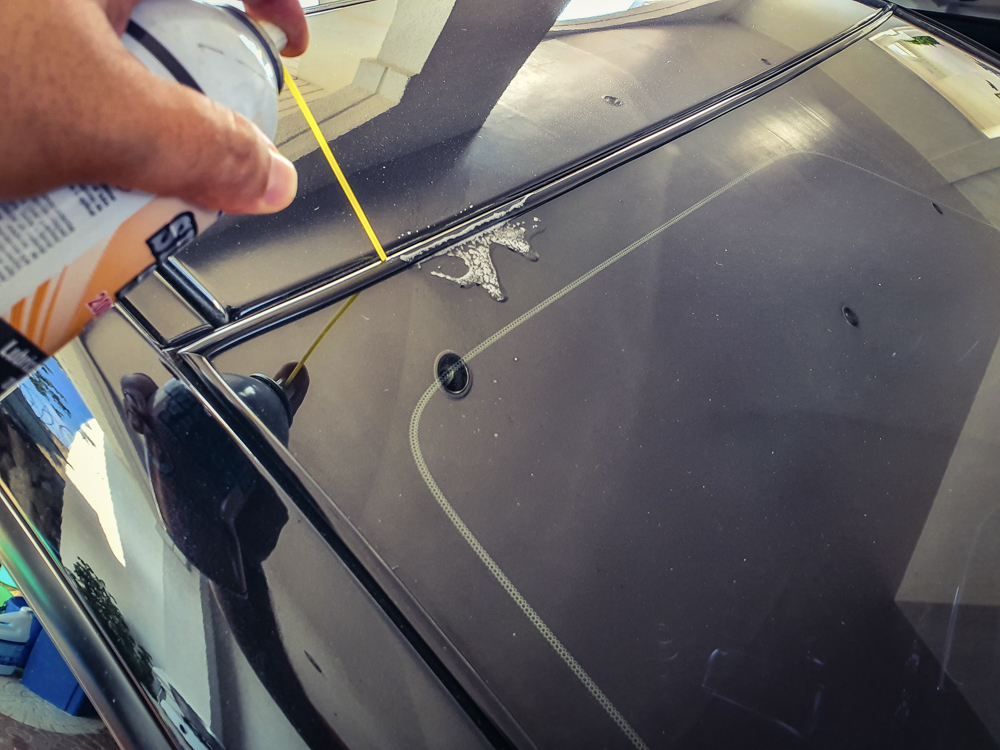
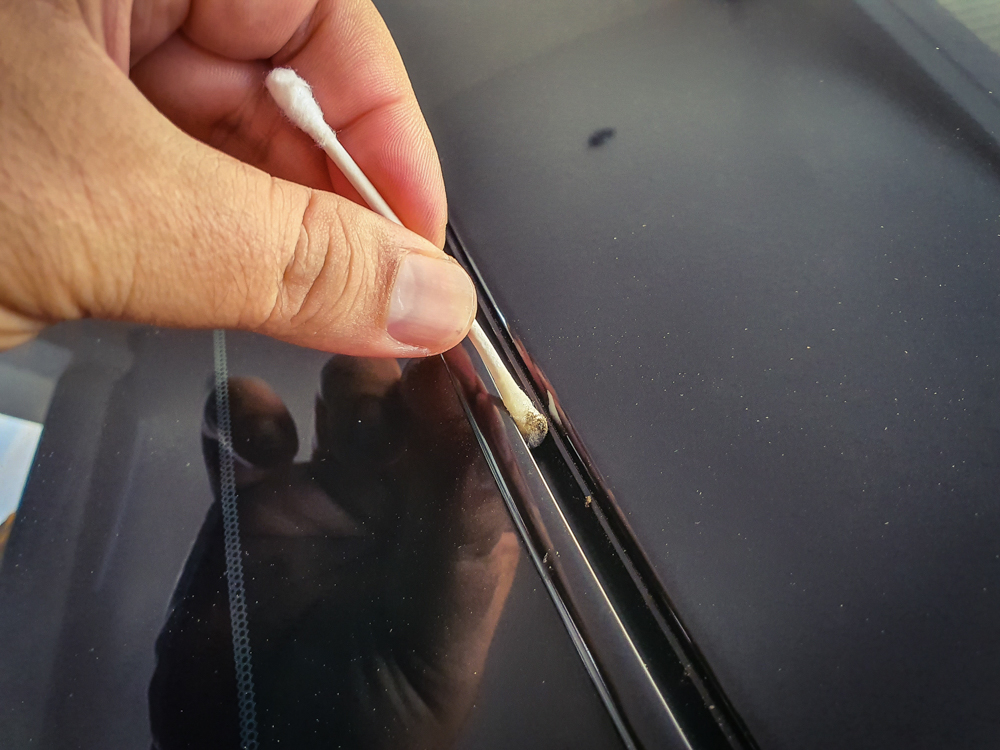
Clean molding thoroughly with detailer spray and terry towel to remove any remaining dirt. For tight spaces or narrow canals such as the ones you see on your windshield molding, use the paintbrush (or cotton buds) along with the detailer spray, and towel to achieve the cleanest result. Allow to dry.
Spray silicone lubricant liberally along the entire stretch of the molding, wiping off any excess liquid on the sides with a dry terry towel. You can also soak a section of the terry towel with silicone spray and apply for minimal mess. Do a double coat after the first spray if you wish to intensify protection.
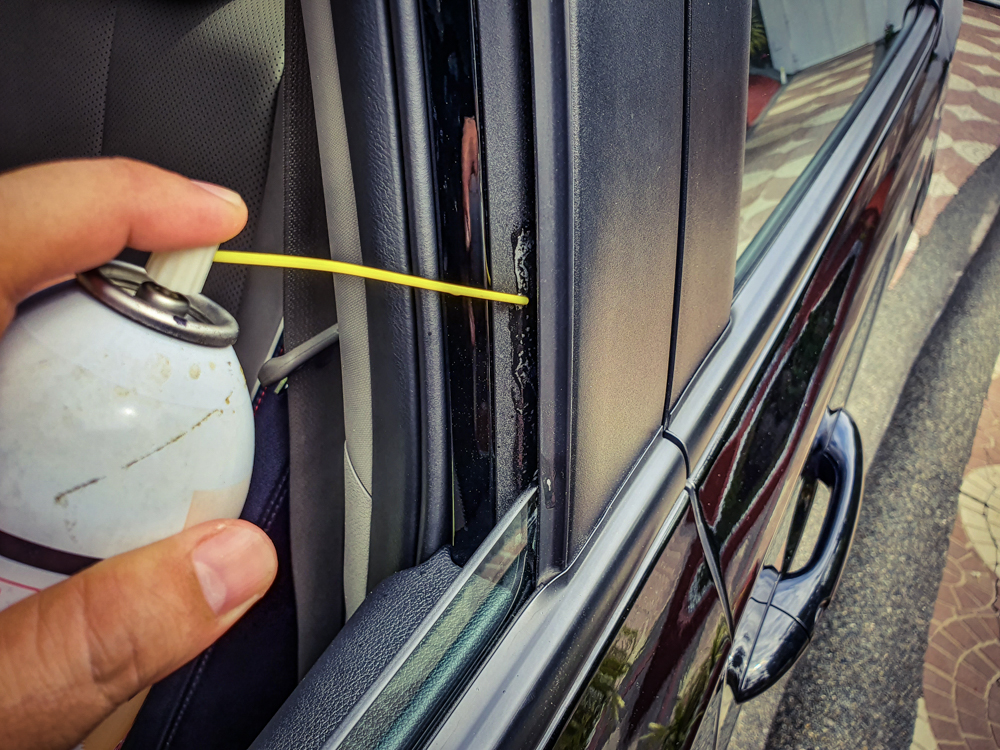
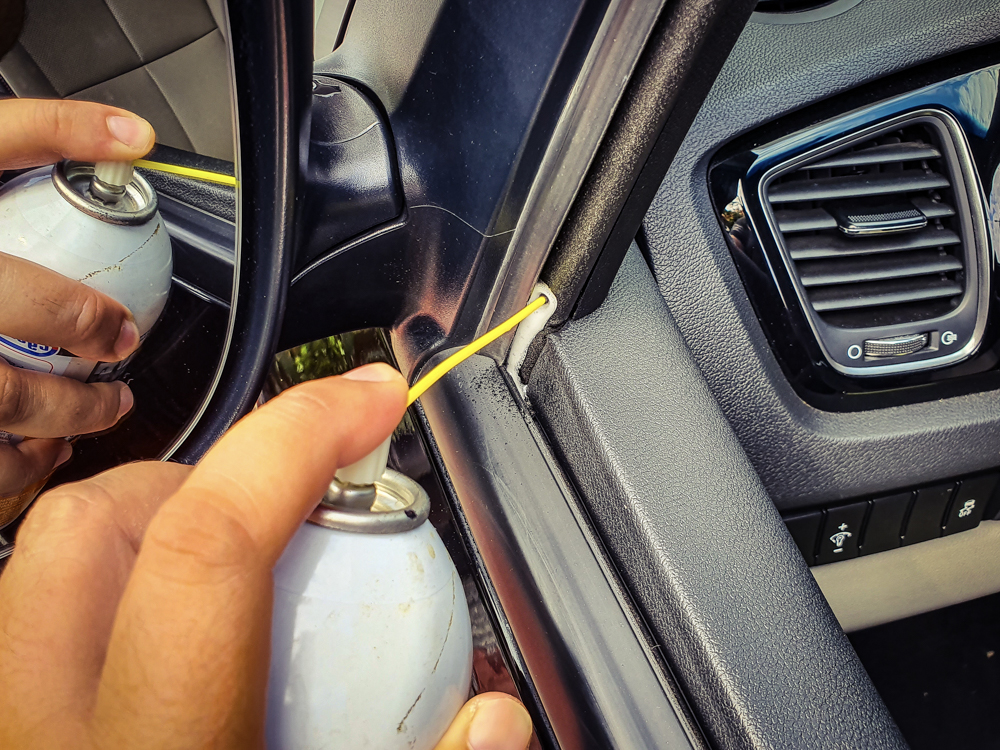
For windows, open them all the way down and follow the same procedure mentioned above. In addition, spray the window rails on both ends that guide the glass as it moves up and down. This will also help improve smoothness of operation and reduce strain on the window motor.
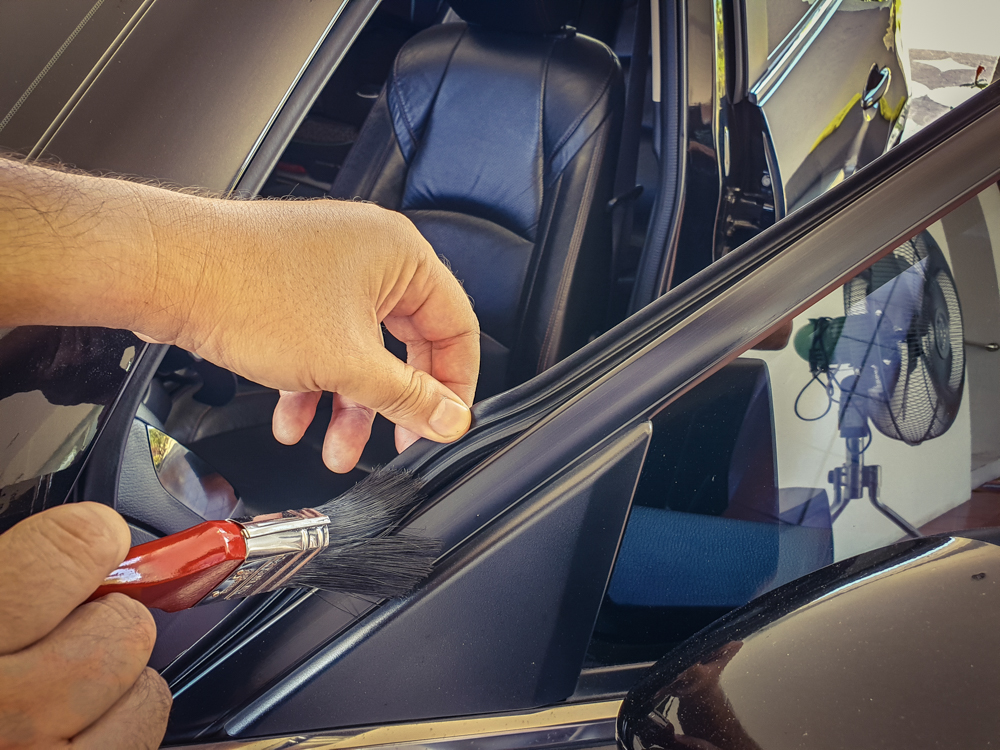
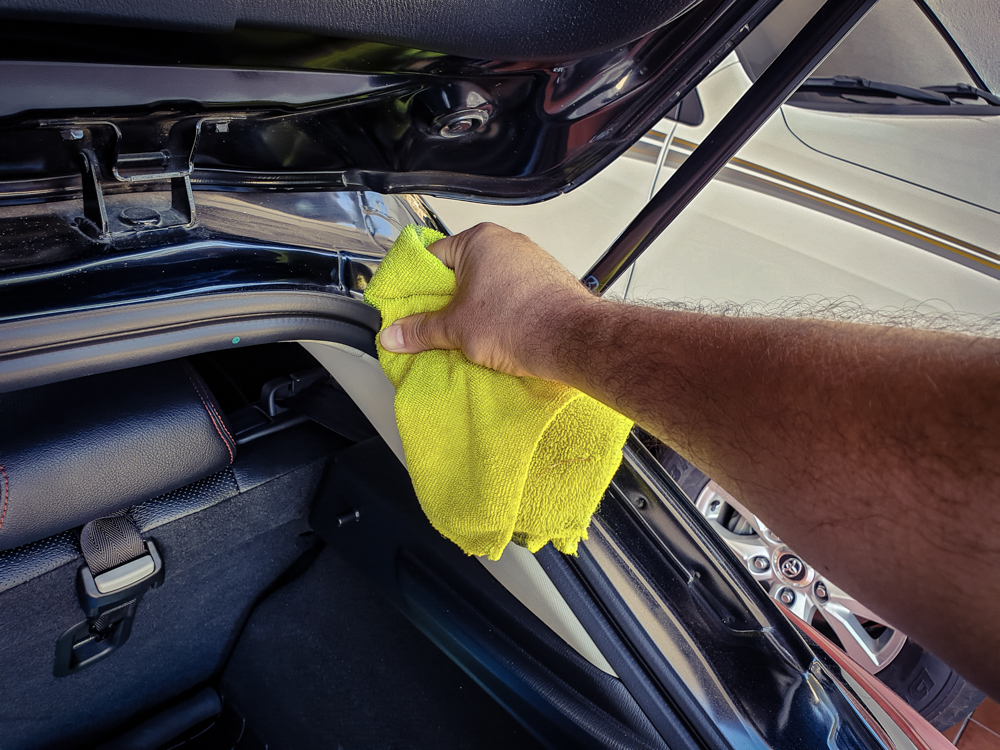
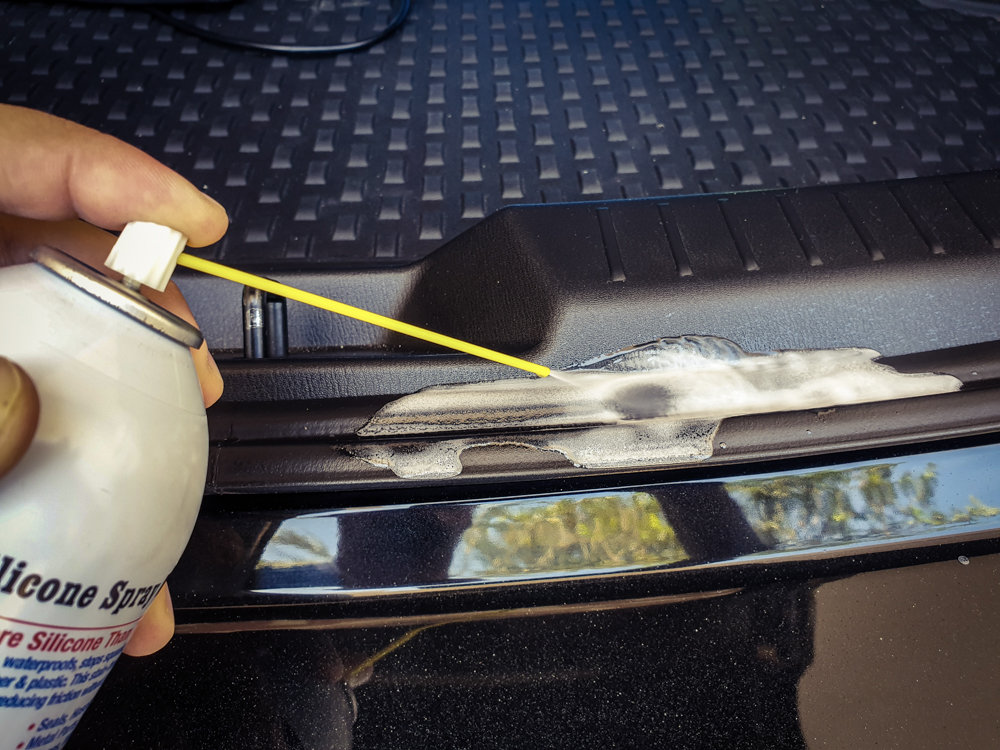
As for weather strips, do the same steps as you would with molding. Since they’re soft and often have folds, take the time to clean them properly with the paintbrush/cotton buds before applying silicone lubricant. You can also clean and protect these parts using protectant once a week after silicone-lube treatment. A quality protectant usually contains UV blockers to prevent these rubber parts from deteriorating and sticking. Don’t forget to treat the weather strips found in your engine bay and trunk. Include the rubber stoppers found under the hood for said treatment.
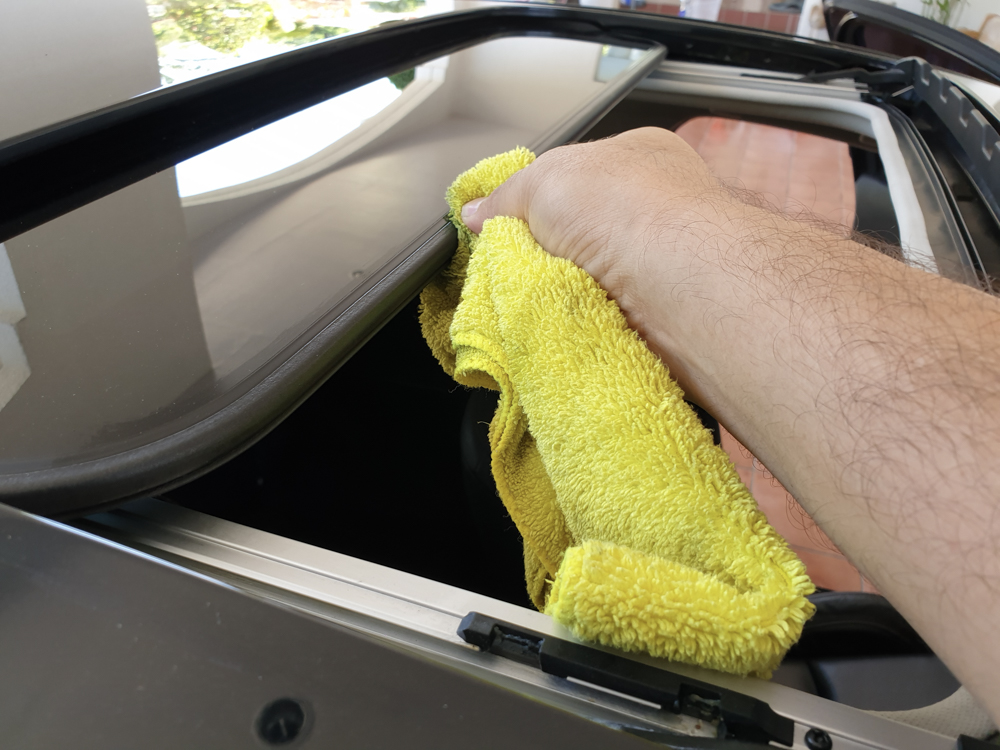
If you have a sunroof, open it both ways so you can cover the entire weather strip surrounding it with silicone lube after you’ve cleaned it with the paintbrush and wiped it down with towel moistened with detailer spray. To avoid a dripping mess inside your cabin, it’s best to spray the silicone lube onto a terry towel and then apply directly on the strip.
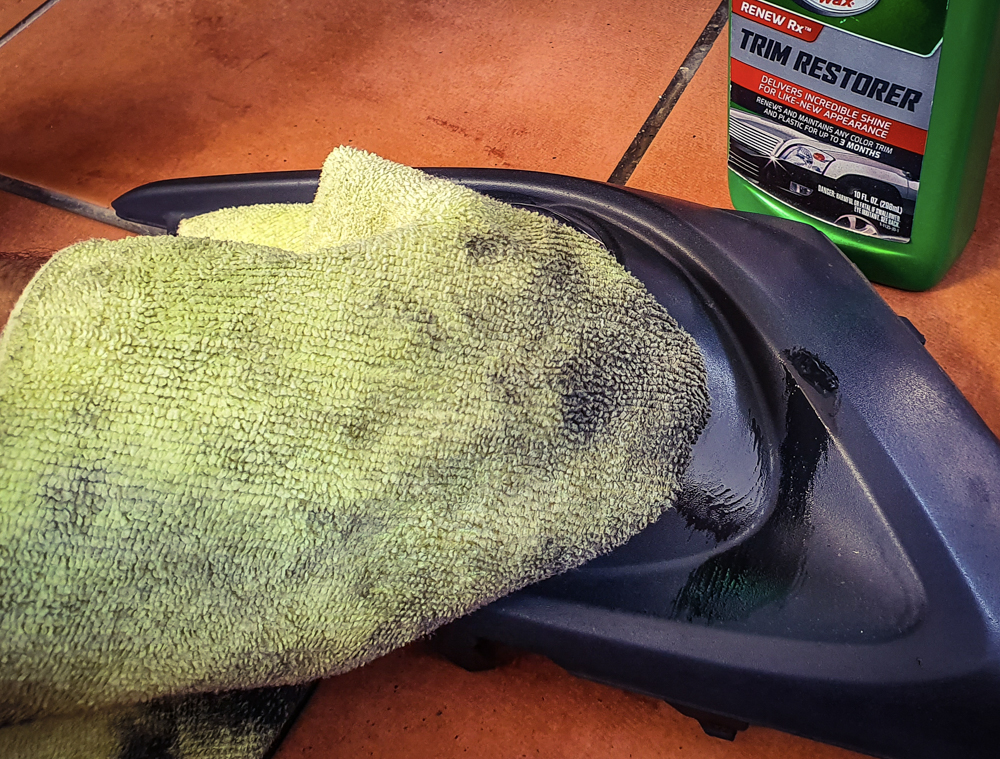
For exterior ABS plastic parts such as bumpers, fixtures and portions of the engine bay, apply protectant generously on these areas provided they are dry and clean. Add another application to enhance protection.
If your ABS plastics are showing signs of wear and fading, applying a trim restorer would be the ideal way to bring these bits back to life. A quality trim restorer usually has a thicker consistency than your usual protectant. Think of it as petroleum jelly coming to rescue your calloused and cracked heels.
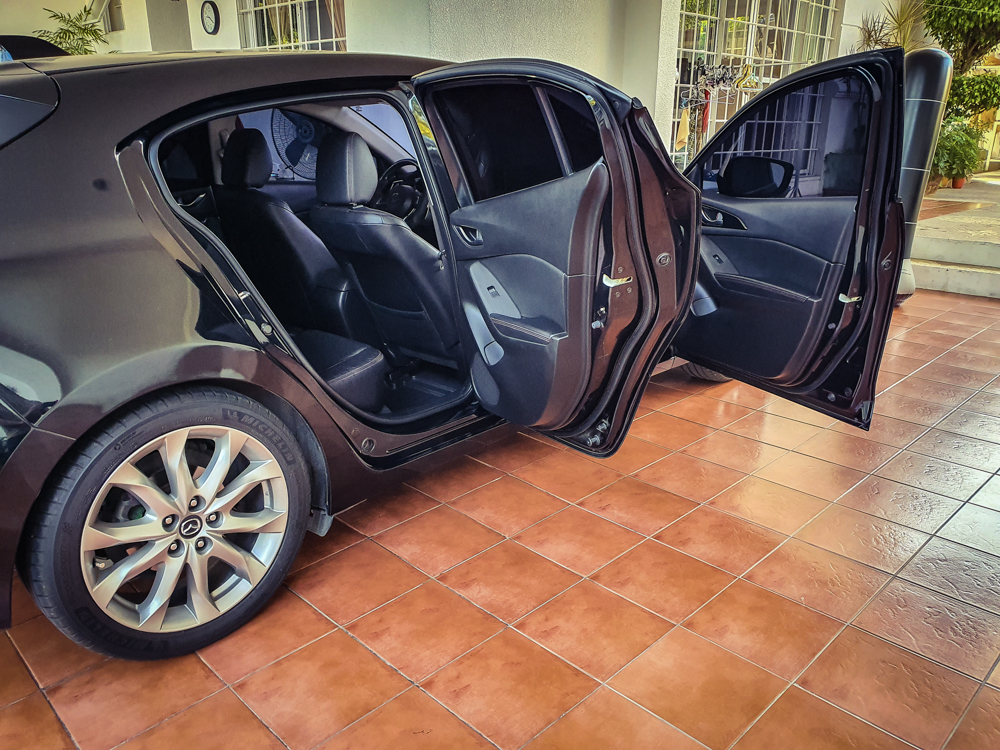
Make sure to perform the silicone lubricant spray treatment two to four times a year, and use protectant in between as often as you can. As for plastics in your cabin, we’ll save that for another piece on interior detailing.


0 Comments